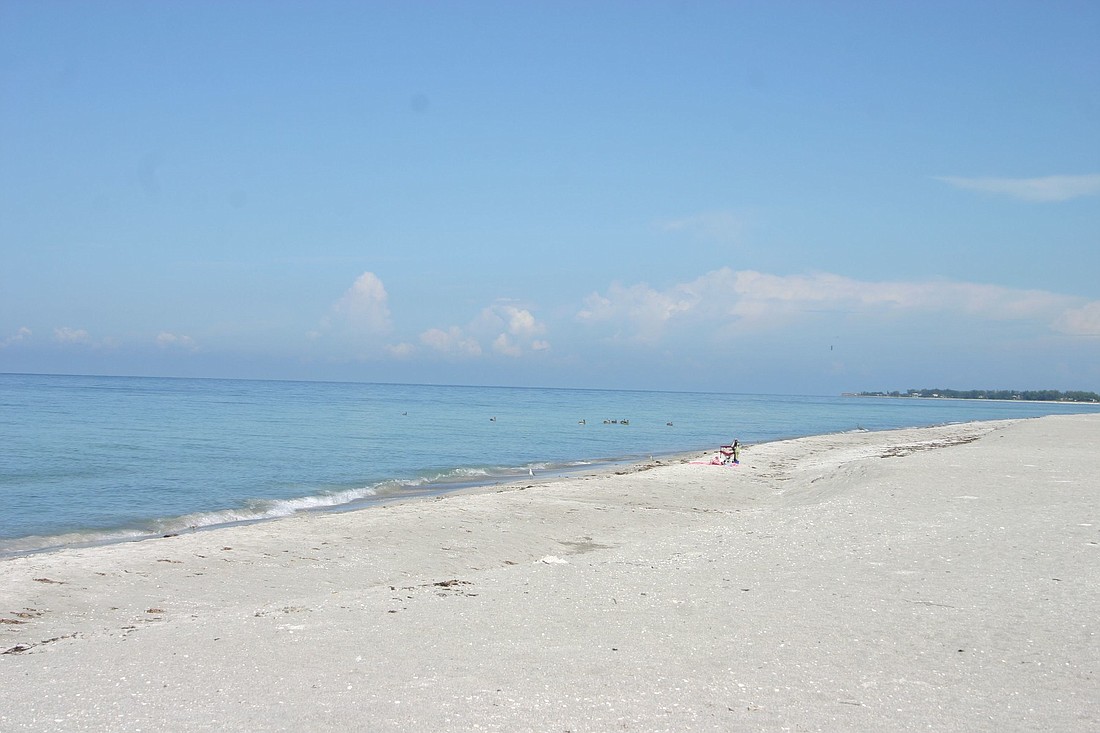- April 25, 2024
-
-
Loading

Loading

Is the town opening up “a can of worms” if it reviews how Longboat Key assesses property owners for the town’s beach projects?
Commissioner Phill Younger certainly thinks so.
At Monday night’s Longboat Key Town Commission meeting, Town Manager Dave Bullock and Town Attorney Maggie Mooney-Portale proposed an ordinance that asks for a budget of $100,000 for “anticipated consulting and legal services to prepare certain supporting studies and revisions to the 1992 beach ordinances, which authorize the levy of millage dedicated to beach nourishment.”
Bullock told the commission one of his first concerns when he arrived as town manager was the rising cost of beach projects and how beach bonds the town’s taxpayers decide on through referendums are approved.
That’s because former town attorney Dave Persson told Bullock that a bond counsel wouldn’t approve the $16 million beach project that taxpayers already approved three years ago. Upon first review, Persson said he wasn’t comfortable with the town’s two-page District A and District B beach taxing district ordinances.
Voters approved via a referendum in March 2011 the issuance of a $16 million bond, with District A voters footing 80% of the bill and District B voters paying the remaining 20%.
District A includes all residential properties west of Gulf of Mexico Drive (i.e., the Gulf side) and all commercial properties on the island, while District B consists of all other Key properties.
The 80/20 split has been in effect since October 1992 after four years of debate at Town Hall on how to pay for a $14 million beach project that occurred in 1993 (see sidebar).
But Bullock is worried that as beach project costs rise, property owners will start to argue in court why some of them are forced to pay for more of the bill.
Those two-page ordinances, Bullock said, need to be reworked “so they are highly defensible for future financings” in the event they are challenged by disgruntled property owners.
“With beach financings of $25 million to $50 million in the future, there will be a high likelihood of challenges to the validity of the beach bonds,” Bullock said.
The changes are also being proposed in case the town considers a pay-as-you-go process in the future for beach projects instead of paying them off over time with a bond.
Mooney-Portale also recommends the town have a study/analysis performed at an estimated cost of $40,000 that will help justify why the town pays for beach projects with an 80/20 split.
Younger said the study “is a waste of time” and “won’t hold water” if a beach bond is disputed.
“Any argument a study like this can carry weight in court is ludicrous,” Younger said.
Younger said he recommends modifying the ordinances to make them more defensible, but argued that rewriting the two-page ordinances shouldn’t cost $60,000 and could be performed by Mooney-Portale instead of through special legal counsel.
Bullock said the cost is just an estimate and staff and Mooney-Portale will work to have the ordinances rewritten for less money.
Younger warned that “monkeying with districts that have worked for years will open up a can of worms we don’t want to open.”
The commission will make a beach funding policy decision before future beach projects are approved. Bullock has proposed pay-as-you-go options that could come with cost splits or uniform costs for all property owners in the future.
While Younger noted that “everyone helping to pay the full share didn’t fly years ago,” Commissioner Pat Zunz said the issue should be looked at again.
“We all pay to fund schools and most of us don’t have school-age children,” Zunz said. “I see it the same way as we fund schools.”
Younger urged the commission to discuss a $40,000 study at a future workshop, but commissioners approved the entire $100,000 budget request by a 4-2 vote.
Vice Mayor Jack Duncan and Commissioners Terry Gans, Irwin Pastor and Zunz voted in favor. Younger and Commissioner Lynn Larson voted against approving the ordinance. Mayor Jim Brown was absent from the meeting.
The 80/20 Beach Split
Since October 1992, Key property owners have paid for beach projects using the following model: District A voters foot 80% of a beach project bill and District B voters pay the remaining 20%.
District A includes all residential properties west of Gulf of Mexico Drive (i.e., the Gulf side) and all commercial properties on the island, while District B consists of all other Key properties.
In 1989, during a time when the Key’s shoreline was severely eroded, the Town Commission put a “straw ballot” beach renourishment question on the 1989 ballot, asking voters to pay for a beach project across the board uniformly. It was turned down by a vote of 2,156 against and 1,606 in favor. A similar straw ballot failed again in January 1990.
According to the book “Calusas to Condominiums,” the commission, town staff and a committee worked throughout the year to come up with and advertise a plan that consisted of the 80/20 beach project funding plan. A vote was scheduled for December 1990 and the town’s 2,190 registered voters at the time passed the controversial measure by a margin of 15 votes.
The new Longboat Key Beach Erosion Control District plan was declared illegal by the Florida Supreme Court because the vote occurred within two counties. But a special vote of the Legislature that occurred the same day as the court’s decision made the vote legal, according to the book. Key voters in October 1992 officially approved a $14 million beach project through a referendum after the state blessed the previous vote. Several other beach projects have been paid for with the same 80/20 funding split.
Contact Kurt Schultheis at [email protected]